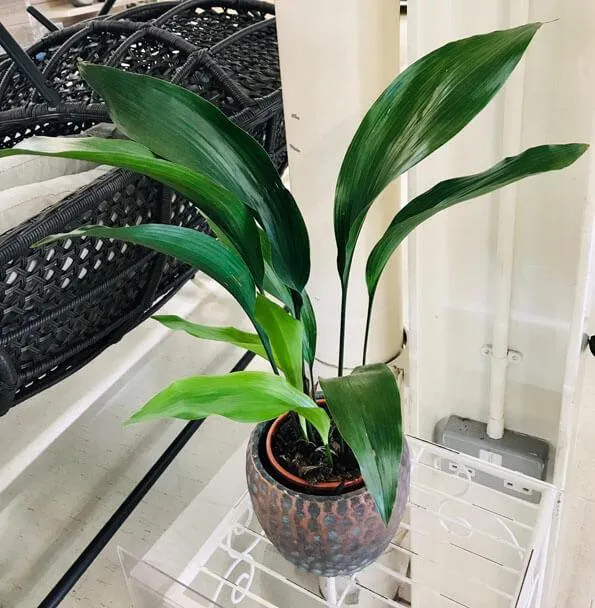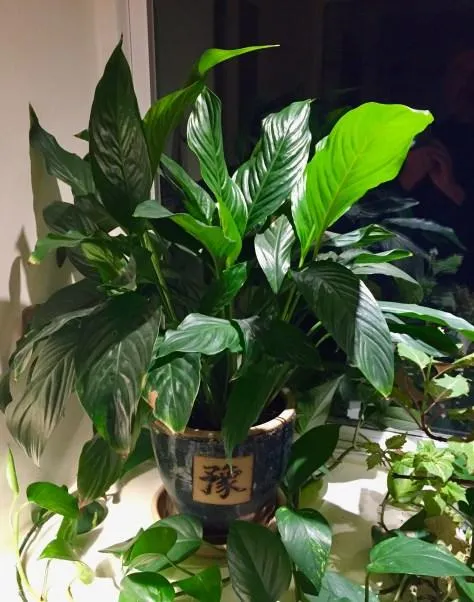Can Cats and Cast Iron Plants Coexist Peacefully?
If you have both cats and houseplants in your home, integrating a cast iron plant into your indoor garden may seem like an appealing option. Cast iron plants (Aspidistra elatior) are low-maintenance plants that can tolerate low light and thrive on neglect. However, their name can be a bit misleading when it comes to cats. In this article, I’ll answer common questions about keeping cast iron plants and cats together based on my experience owning both.
Are Cast Iron Plants Toxic to Cats?
The short answer is that cast iron plants are considered non-toxic to cats. However, in some cases cats may choose to nibble on or chew on the leaves, which could potentially cause gastrointestinal upset. The cast iron plant contains saponins, bitter-tasting chemicals that usually deter cats from eating large amounts. But an adventurous kitty may sample a bite anyway, so it’s wise to keep an eye on curious cats around any plants.
Rather than toxicity, the bigger issue with cats and cast iron plants is that cats are hardwired as hunters with a strong prey drive. They enjoy pouncing on and batting around moving objects. Unfortunately for plant parents, cast iron plants’ glossy, dangling leaves are a temptation for this natural feline behavior.

Will Cats Chew on Cast Iron Plant Leaves?
From my experience owning cats, it’s quite common for them to be attracted to the dark green, strap-like leaves of cast iron plants. Their movement in even a slight breeze can trigger a cat’s hunting instincts, enticing them to bat at or chomp on the leaves. I recall one of my cats, Tiger, making a game of stealthily creeping up on a cast iron plant and then pouncing to smack its leaves. More stubborn kitties may persist in this behavior despite being discouraged.
While cast iron plants can regrow damaged leaves, constant chewing and breaking of leaves by cats will stress the plant. Over time it may lose its lush appearance and begin to look sparse and raggled if a cat finds it an enjoyable toy. The taste of the leaves alone usually won’t harm a cat, but fragments could present a choking hazard if swallowed.
How to Cat-Proof Cast Iron Plants
If you want to keep your cats and peace-loving cast iron plants coexisting harmoniously, here are some tips based on my experiences:

- Choose a cat-free location. Reserve a high shelf, tall plant stand, or hanging planter out of leaping range for the cast iron plant. Cats can jump surprisingly high when motivated!
- Use barriers. Consider encircling the plant’s base with closely spaced wooden stakes, gravel, or upside-down plastic cups to deter pawing and swatting. You can also try adhesive sheets that release a “sssst!” noise on contact.
- Consider an alternative. If barrier methods don’t work for your curious cats, low-light tolerant spider plants, pothos, or philodendrons may be less enticing to batting paws. Their trailing vines are less dangling-leaf temptation.
- Distract with toys. Keep interactive catnip toys on hand to redirect hunting instincts to acceptable targets and satisfy their need to pounce. Consider puzzle treat-dispensing toys that mentally stimulate as well.
Can Cats and Cast Iron Plants Coexist with Patience?
In short – it’s possible, but it requires finding what deters each particular cat. It may take some trial and error of different barrier methods and persuading a persistent kitty that cast iron plants aren’t a toy. Be prepared for some casualty leaves until they lose interest. But if the cast iron plant is given a protected space high up or its leaves mostly untouchable, chances are good that both cat and plant parents can maintain their indoor garden together. Communication and cooperation are key!
Basically, as long as a cat’s natural curiosity and predatory instincts can be satisfied with other engaging activities, they probably won’t see cast iron plants as a temptation for long. Likewise, keeping plants out of reach prevents damage that stresses both flora and fauna. With patience and compromise, cats and this durable houseplant can hopefully co-exist peacefully indoors. It just takes finding the right balance between the two that works.
Does this help answer your questions about whether cats and cast iron plants can live peacefully together? Let me know if you need any clarification or have additional concerns! I’d be happy to discuss my experiences further. With a little problem-solving and trial-and-error, most pet parents can find a solution.

Factors to Consider When Choosing a Cast Iron Plant
| Factors | Details |
|---|---|
| Light Requirements | Prefers bright, indirect light. Can tolerate low light but may not thrive. |
| Watering | Keep soil lightly moist. Allow top inch of soil to dry out between waterings. |
| Temperature | Prefers temperatures between 60-80°F. Can tolerate 55-90°F but may go dormant in very hot or cold conditions. |
| Humidity | Enjoys moderate humidity. May need occasional misting if air is very dry. |
| Soil | Well-draining, organic potting mix. Tolerates some drying out between waterings. |
| Fertilizer | Feed weakly diluted liquid fertilizer monthly during spring and summer. |
FAQ
-
Do cast iron plants appeal to cats basically?
Cats may dig around in cast iron plants sometimes, I guess. But the plant itself is not that interesting to them. Cats are more into fun toys, tasty treats or maybe lazying around in a sunbeam.
-
Will cats eat the leaves of a cast iron plant?
It’s possible a cat might nibble on a cast iron plant leaf once in a while just to see what it tastes like. However, experts say the leaves are not at all palatable for cats. So cats are likely to lose interest quickly in the plant itself. At the same time, there’s no harm in them tasting it really.
-
Do cast iron plants produce pollen that could bother cats?
From what I’ve read, cast iron plants don’t produce pollen that would affect cats. They bloom tiny white flowers that aren’t showy enough to cause an allergic reaction in pets. You’d have to have a cat with absurdly sensitive allergies for cast iron pollen to be an issue kinda!

-
Can cats use cast iron plants as scratching posts?
Perhaps cats could use cast iron plants as scratching posts in a pinch if they felt like sharpening their claws right then. But you know cats – they usually prefer scratching surfaces that are a bit rougher and more solid. So while your cat might scratch it once, it likely won’t last as their regular scratching post. They’ll probably go back to what really gets those claws good and sharpened!
-
Is it safe to have a cast iron plant in a room with cats?
In general, cast iron plants are considered non-toxic to cats. That said, anything is possible with those curious kitty paws! I’d just be sure any potting soil or fertilizer is child and pet safe, just in case. Overall it doesn’t seem like cast iron plants would pose much risk to cats if they’re kept out of chomping and swallowing range. But you never know with those amazing animals!
-
What parts of a cast iron plant, if any, should be kept away from cats?
If a cat ingested large quantities of a cast iron plant, experts say maybe the roots or very young shoots could possibly cause some tummy troubles. Though there have been no specific studies on cats and cast iron plants that I can find. As with most houseplants, it’s best to keep the dirt and anything a cat might try to eat away from their reach. But an occasional nibble shouldn’t do much harm I figure!
